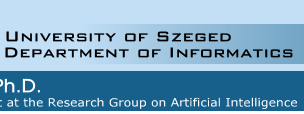"What was the contribution of phonetics to automatic speech recognition?"
This question was posed by a prominent researcher of the latter
field in a recent conference. The fact is that current speech recognizers
make use of practically no phonetic knowledge. In the early experiments
with speech recognition there were attempts to create knowledge-based
systems, but statistical methods soon took over. The efficiency
of these is rooted in the fact that their parameters can be automatically
optimized on huge training databases. But the price is that the
optimization requires a very simple mathematical model - usually
based on unrealistic or oversimplistic assumptions. Statistical
methods, however, do not automatically exclude the incorporation
of phonetic or speech perception knowledge. These can be taken into
consideration when designing the structure of the model (which leads
to the so-called inductive bias). The currently most popular modeling
technique, Hidden Markov Modeling has several incorrect simplifying
assumptions regarding the information coding nature of speech. Some
of these restrictions can be alleviated by using the so-called segment-based
models. The OASIS recognizer developed at our institute is also
segment-based and, in accordance with the literature, we have also
found that these models indeed give a better representation of phones
than the traditional HMM technique. Moreover, the discriminative
modeling scheme applied in our system provides an easy way of integrating
higher-level (statistical) linguistic knowledge sources into the
recognition process. In our paper we present the current structure
the OASIS system, and examine what possibilities this scheme provides
for the integration of linguistic knowledge sources.





